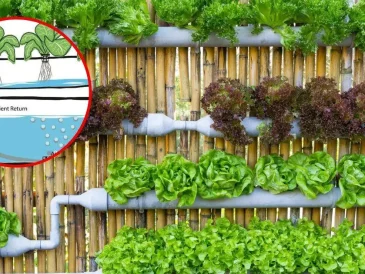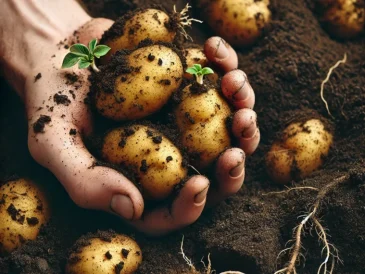Autumn is the perfect time to start composting, when you’ve pruned and trimmed your garden and are left with plenty of waste to produce environmentally friendly compost before winter arrives.
Made up of food and plants that decompose over several months before turning into ‘humus’ (a nutrient-rich soil), compost is great for the environment and ideal for families who are left a high amount of food waste.
Do you already have a compost heap at home?
In a bid to get homeowners to create their own mini compost heaps at home, the garden buffs at GardenBuildingsDirect.co.uk have researched the best techniques for making a compost pile.

Here are 10 easy steps for making a compost heap:
1. Container
Select a container for your compost and place it in a grassy, relatively shady part of your garden. You should make sure that the container doesn’t have a bottom – the compost heap should be directly touching the ground – and that it’s the right size for you and your family. You want to make sure it fits everything you need to dispose of but it shouldn’t be too big either.

2. Base
Pile a few inches of branches and twigs at the bottom to help aerate the pile.
3. Balance
To have the most success composting, you want an equal balance of nitrogen, carbon, water and air. Nitrogen will be found in the green materials you use and carbons in the brown matter.
4. Prep
Chop or break up any big chunks of matter before putting them in the container.
5. Include
Some of the best ingredients for a successful compost heap include dried leaves, grass clippings, manure, fruit, vegetables, peelings, coffee grounds, tea leaves, old wine, used pet bedding (from herbivores only – rabbits and hamsters etc.), dry cat or dog food, dust from sweeping and vacuuming, old herbs and spices, shredded newspaper, receipts, hair (human and pet), toothpicks and wine corks.
6. Avoid
Avoid meat, dairy and bread which rot and attract pests, as well as any high processed foods as they take longer to break down.
7. Bury
If you are going to be adding new scraps quite regularly, it’s a good idea to bury them under the pile that’s already starting to break down instead of just throwing them on top.
8. Aerate
Around once a week, you should use a spade or shovel to mix the materials around and aerate the pile slightly.
9. Water
When you notice the pile is getting a little too dry, you should use water to moisten it slightly. If it’s a particularly hot day you should consider covering your pile so that it retains its moisture.
10. Ready to use
Your compost should be ready to use after a few months. You will know when it turns a dark brown colour, develops an earthy smell and is warm to the touch, which is a result of all the microbes living inside.




